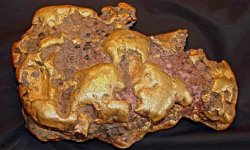tamrock
Gold Member
- Jan 16, 2013
- 15,330
- 30,914
- Detector(s) used
- Bounty Hunter Tracker IV
- Primary Interest:
- All Treasure Hunting
This attachment might ask you to register to read it, but you can click on - I'll do it later and then you can read the full article.

Scientists find seismic role in formation of large gold nuggets
Forces unleashed by quakes squeeze quartz enough to generate electric fields, driving formation of deposits
Amazon Forum Fav 👍
Attachments
Last edited:
Upvote
7









